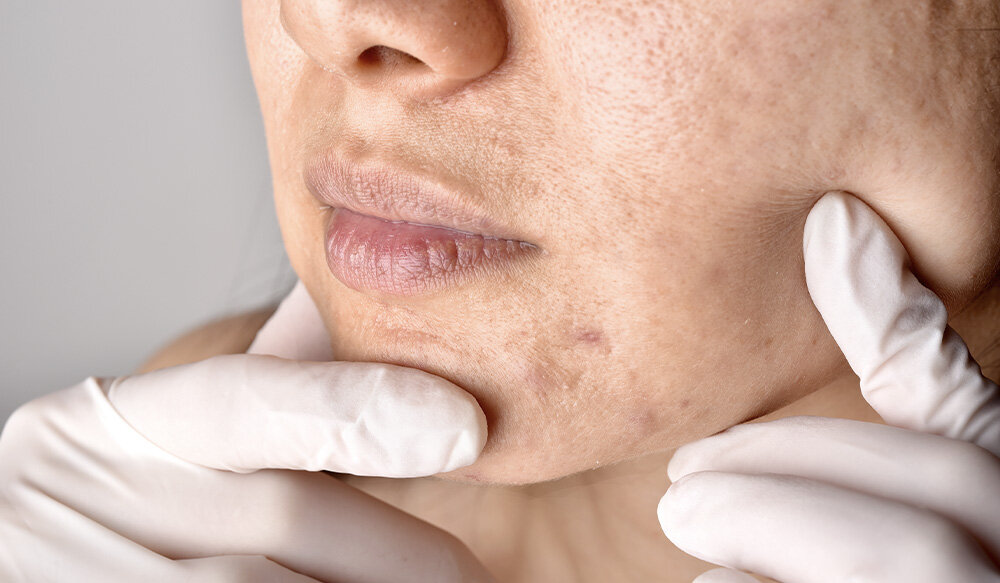The different types of acne and their causes
The word ‘acne’ is thrown around all the time, along with medicinal and traditional ‘cure’ suggestions, but many people don’t understand exactly what acne is or the cause.
So today, I thought I’d share a bit more about the common types of acne, and why they occur.
Comedonal Acne
Comedonal acne is a simple condition – it occurs when pores become plugged with oil, causing small bumps under the skin, particularly around the T zone area.
This type of acne has a couple of contributing factors. Firstly, slower skin cell turnover can cause a build-up of cells that make it easier for the oil to become trapped under a layer of skin.
Secondly is a lack of factors that exfoliate away these excess skin cells, often combined with use of products that can clog the skin, such as heavy makeup.
Finally, an excess production of sebum, the oil produced in the skin, can cause a plug to form quickly. Sebum production is linked to a variety of factors, including liver and gut health and hormone balance.
Inflammatory Acne
Inflammatory acne is caused by clogged pores, and often begins as comedonal, but then the body has an inflammatory response to the clogged pores. This then leads to the common idea of acne – formation of blackheads, whiteheads, and redness of the skin around the spots.
Inflammatory acne has all of the contributing factors of comedonal acne – slow skin turnover, clogging of the skin, and excess sebum production – but also has other factors involved.
The inflammatory response can be exaggerated in those who already have inflammation due to other health issues. Inflammation in the skin can also be triggered by an imbalance of gut flora in the digestive tract.
It can be increased due to a lack of anti-inflammatory nutrients, such as omega-3 fatty acids and antioxidants that protect the body from the damage of inflammation.
Finally, many people with inflammatory acne also have a higher amount of a particular bacteria strain that can infect the spots, which means that bacteria balance and the immune system also play a part in this form of acne.
Cystic Acne
Cystic acne is the most severe type of acne, with a combination of clogged pores, deep inflammation and chronically infected spots leading to the deep scarring of the skin. It often comes with nodules forming under the skin from the inflammation, as well as involvement of other parts of the body, such as the back.
Cystic acne is definitely a sign that there is an imbalance in the body, particularly in the immune, digestive, hormonal and detoxification systems.
Clogged pores, sebum excess and skin turnover all play a role, but particularly hormones and inflammatory bacteria seem to have a big impact on cystic acne. The inflammatory substance P and the bacteria P. acnes also play very prevalent roles in cystic acne.
There are also likely to be multiple nutrient deficiencies at play – particularly those that support gut health and the immune system.
Finally, the inflammation in response to infection is the main factor behind the scarring of the skin in cystic acne. It can cause an abnormal healing response and collagen production in the skin is altered.
Hormonal Onset Acne
Hormonal onset acne is a little bit different, in that it generally has a later onset than most types of acne, and its main cause is a hormonal imbalance. Hormonal onset acne generally occurs in women in their late 20s or early 30s, often in women who have never experienced acne before.
The main change is often in estrogen levels. This in itself can have multiple causes – whether it be too much testosterone production as a side effect of conditions such as PCOS, or from excess or too little progesterone, or even from insufficient nutrients to support healthy estrogen levels.
This type of acne can show in forms of comedonal, inflammatory, or cystic acne, and is often identified based on the location and timing of the acne in a woman’s cycle.
Hormone testing is recommended for proper treatment of this form of acne.
Other Causes of Acne
There are a number of other things that can contribute to one of these forms of acne, or even cause acne to form. While many of these types of acne have internal causes, there are also things in the environment that can trigger the formation of acne.
Common irritants include make-up or skin-care that doesn’t suit the skin, certain medications, wearing hats, or even the hair products you apply to your hair. Anything that can inflame or damage the skin has the potential to cause acne in a vulnerable person. Even excess heat and humidity has been known to cause acne.
Does this mean that if you’re vulnerable to acne, that you’re doomed to never wear a hat or wear foundation again? Absolutely not. What it does mean is that you need to be on top of your well-being to reduce your risk.
If you want to reduce your current acne, or prevent further break-outs, your best bet is to book in for an appointment so we can create a personalized treatment plan to give you your healthiest skin yet.
References
http://onlinelibrary.wiley.com/doi/10.1111/j.1468-3083.2010.03919.x/full
http://iai.asm.org/content/63/8/3158.short
http://www.nejm.org/doi/full/10.1056/NEJM198304283081701

